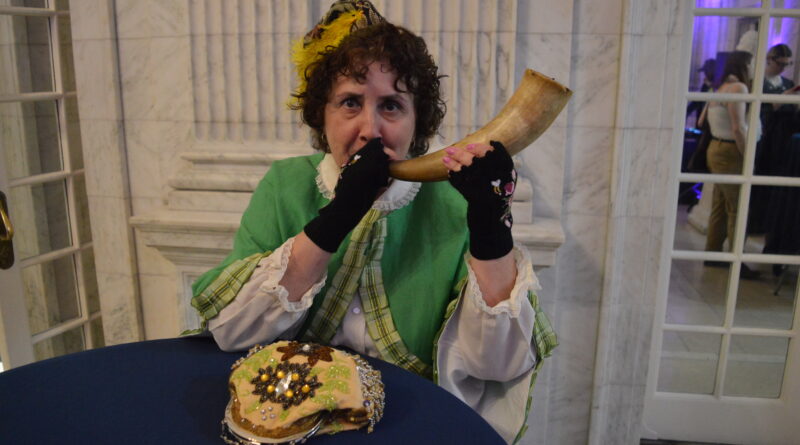DAR Women’s History Costume Party Puts Notable Women, Historic Fashion On Parade
WASHINGTON, D.C. – Admittedly, a colonial-era fishwife – a homespun shawl over her shoulders and wicker basket in hand – may not be the first image one would conjure when considering the impact women have had in American history. Nor would say, an aged factory worker who survived an historic blaze. Or a high-spirited girl who spent many-a-night during World War II cutting a rug with thankful GI’s at a serviceman’s USO canteen. But for every famous woman who has graced history’s stage, there have been countless other women who lived life to its fullest and quietly left a lasting legacy.
Recalling such exemplars (both past and present) – and their colorful period-correct attire – was part of the fun we experienced last Saturday night, as the DAR Museum hosted its second annual Women’s History Costume Party.
The DAR Museum is part of the expansive Daughter’s of the American Revolution facility in Washington, D.C. ~ a city-block-long complex with a museum, library, manuscript room & auditorium, which is open to the public.
An in-person event, the Women’s History Costume Party presented “a unique opportunity to pay tribute to the incredible women who have made their mark on the world… while providing party-goers an unforgettable night of connection and celebration.”
Attendees were urged to, “Dress up as your favorite female icon (past or present), or get creative with your own costume inspired by the past.”
Creative would certainly describe the colonial-era fishwife reenactor, who happily shared her backstory while dispensing small bags of Swedish Fish, as she made her way through the crowd. And it would describe the green-leafy look of the girl dressed as Mother Earth. Black robes with white lace collars sufficed for tributes to Ruth Bader Ginsberg. And there was some modern glitter in the form of a surprising Nancy Kerrigan nod ~ sans Nancy’s notable ice skates and her equally famous crutches.
Isabella Moritz – an educator at the DAR Museum – got into the spirit of the occasion, dressed with curls in a lovely blue and white Regency style gown.
“I am a fashion and textile specialist,” offered Isabella. “I’m completing my master’s in that right now, which is actually how I got my start here at the museum. I interned here in 2023 on their Sewn in America exhibit, and we put on this party last year to kind of coincide with that exhibit. It was such a hit that we’re doing it again this year.
“There’s a lot that goes into a party such as this. We want to make sure that people know this is an event anyone can come to. It’s not exclusive. We also wanted to make sure we have lots of activities for people to do. So, we’ve spent time designing bingo cards and coloring sheets that correspond with our exhibit galleries; activities to bring people together. Plus using the library gives ample time and room for people to just mingle and chat and take photos of these wonderful costumes.”
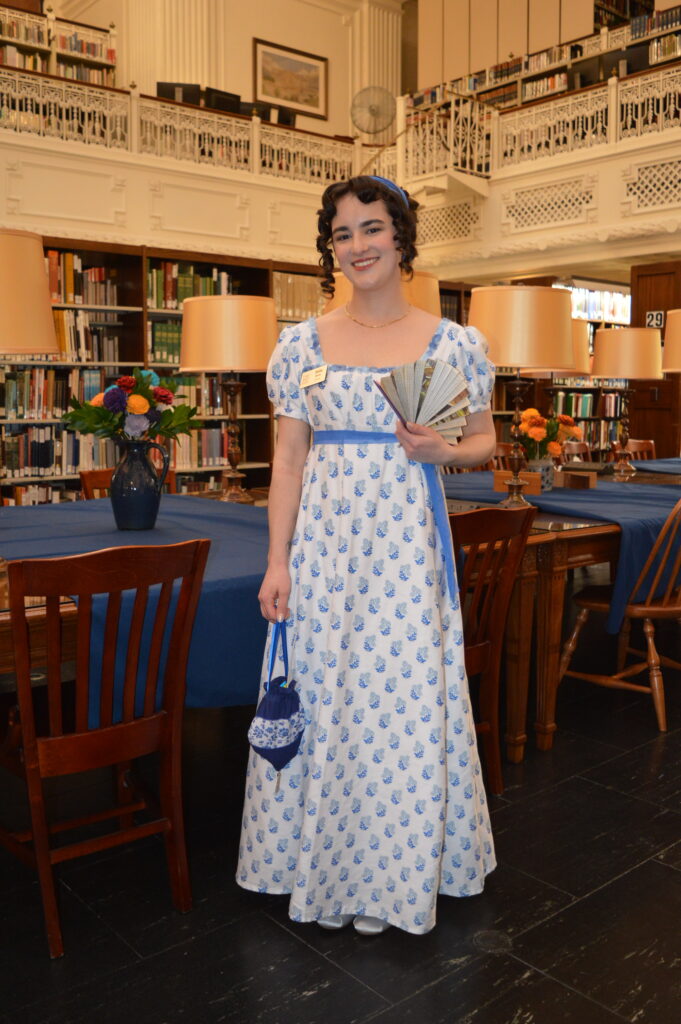
* * * * * *
Ample room indeed! The size of the library surprised this reporter, and we learned from Sarah Kirspel –Coordinator of Museum Engagement and Outreach – that the DAR houses the second largest genealogical library in the country.
“Our librarians can actively help everyone come in and do research from across the country, specific to going back to the time of the Revolution. The purpose of this library is to help people find their Patriot ancestors. It does go back to before the Revolution, but not too much before that, so in this library you’d still be able to find them. The purpose of the genealogy is to work your way back from yourself to your ancestors. So, anything between now and the Revolution, you should be able to discover.”
We asked Ms. Kirspel if the term “patriot ancestors” limited research in any way to actual combat
participants in the American Revolution?
“We get heavier interest in the Revolution times as far as membership or colonial economics. That’s understandable, since DAR is the Daughters of the American Revolution. But to the term patriot ancestors – if they supported the revolutionary cause in any way – whether that’s physically fighting in the field, or selling corn to the army; negotiating in France; anything that supported that cause qualifies someone to become eligible for membership. Just as long as they can trace it all the way back to the Revolution.”
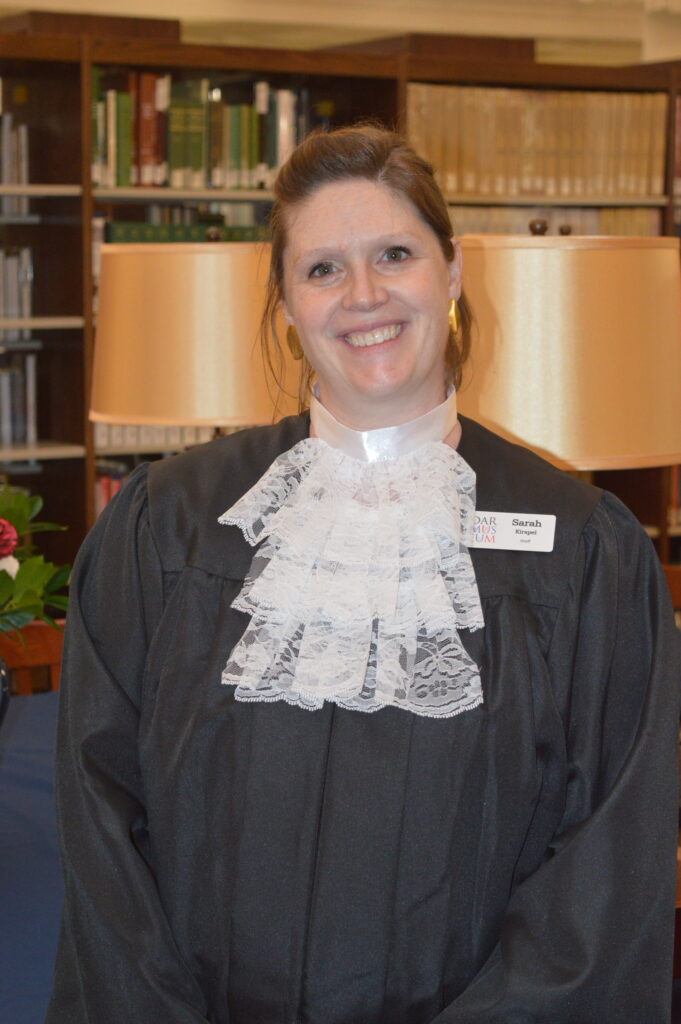
What might visitors to the DAR find outside of the library?
“Our latest and greatest is the Fighting for Freedom exhibition – Black Crafts People and the Pursuit of Independence. This exhibit focuses on both enslaved and free individuals who created crafts over hundreds of years. We’re featuring individual artisans – some named and some unnamed. And as a part of that, we have activities that go on each Saturday for kids. Then once a month, we have a lecture series on Tuesdays for those who are a little bit more academically inclined.
“One of the features in the exhibit is actually a giant blown up picture of the register of enslaved people who worked on the White House, who are largely uncredited. Definitely take a peek at that while you’re here. And in addition to that register, we have a picture of the White House, one of the kind of architectural drawings inviting people to leave their own mark on it with sticky notes. I think that’s a wonderful way to bring people into the messaging of the exhibit, as well. Again, everything in our building is free all the time, except for events like this, where we’re just covering our costs to put it on.”
With the sound of dance music filling an adjacent hall, we wondered what’s coming up next at the DAR Museum?
“We always have family craft activities which children seem to enjoy. We do those every Saturday and they rotate on a monthly basis. We also try to have some kind of seasonal programming. I’m not sure what our next one is, but for example, last year, we did a lecture series on Halloween night, all about the costumes in classic horror. And at Christmas time, we did one on dissecting popular movie costumes, like Christmas movie costumes. We love to have events like this one tonight, and the two I just mentioned, that invite people to come into our museum outside of our normal operating hours, and feel like they’re getting that behind the scenes tactile historical moment, as opposed to just visiting a museum. I think that really appeals to a new demographic, because these events bring in people who would have never stepped through our doors otherwise.”
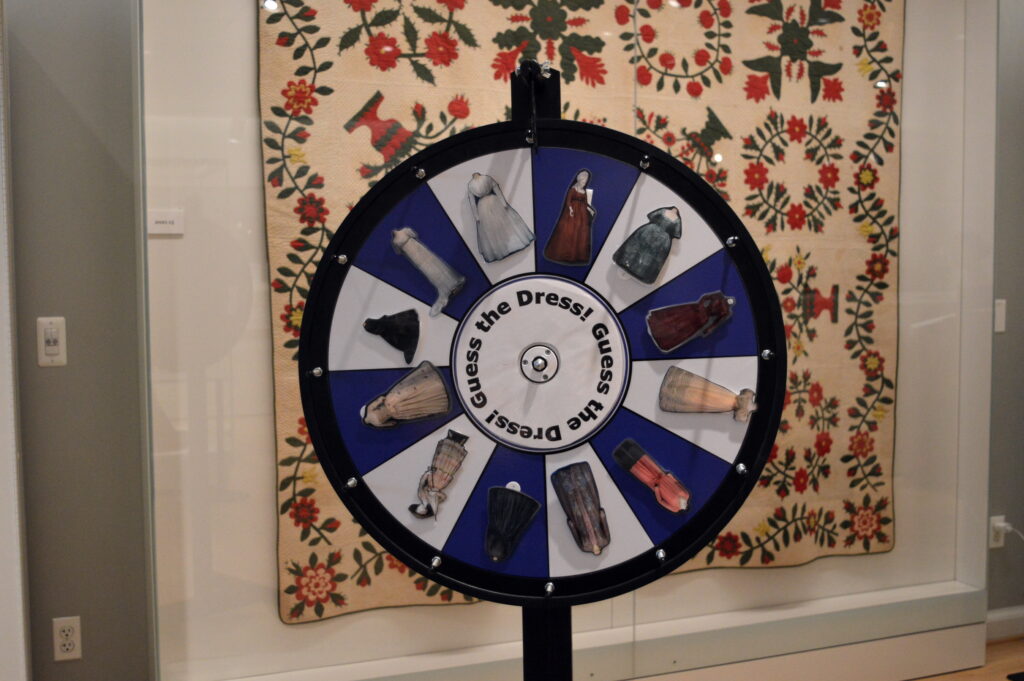
* * * * * *
Being immersed in an event which was both a patriotic AND woman-centric, it was no surprise to encounter one of the most beloved characters from Colonial America.
Enter Rockville resident and Historical Interpreter Sarah Walsh, who portrays Abigail Adams.
“I grew up in Southern California, so I’m a bit of a D.C. transplant. But I got into 18th century Living History and reenacting when I was living in Washington State.
“In 2016, I began portraying Abigail Adams. I just wish I would have had this gown from the beginning! I kind of started out machine sewing, and I made my own costumes. But since moving here, I’ve been working with a gentleman named Christopher Davis, who lives in Massachusetts. He styles himself the colonial elocutionist, and he studies 18th century dictionaries and elocution guides to figure out what people in New England back then would have sounded like. So along with refining my costumes, I’ve been studying with him to add that touch of authenticity to my Abigail Adams interpretations.”
What was it about the idea of portraying Abigail Adams which initially appealed to Sarah?
“Oh, gosh, I think it really has to do with her as a person. It’s not simply her, ‘Remember the Ladies’ catchphrase or admonition she wrote in a private letter to her husband John; urging him to consider women’s rights in the new laws being created. It’s really just the way she kept going, no matter what. You know, she lost four of her six children before her own death. And she maintained her own financial independence, regardless of how much or how little money John was making.
“She was very savvy and an amazing example of that kind of woman who says, ‘No matter what happens, I’m just gonna make it work.’ John absolutely trusted Abigail. He believed in her. He would not have been able to leave as often as he did for extended periods, if he didn’t have complete faith in her. We don’t think of people in that time period as fully supporting interdependence; that they could maintain what was essentially a true partnership. John saw that she was so educated and so intelligent. They really were an intellectual match, as well as a love match.
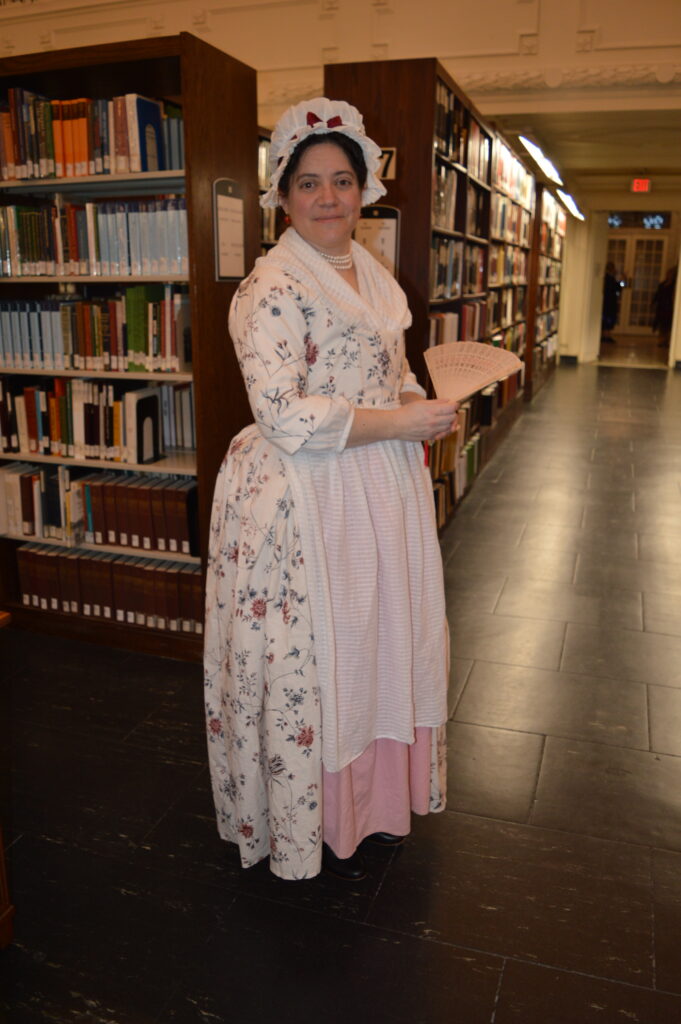
* * * * * *
Also venturing into D.C., from nearby Rockville, for the costume party was new author Lisa Neel. But unlike Sarah Walsh’s living tribute to Abigail Adams, Lisa Neel’s character impression of Polly Beck has certain genealogical roots – roots which took hold in a much darker part of America’s past.
“Polly Beck was my granddad’s great grandmother,” explained Neel. “She lived from 1820 until 1872, and she survived the Cherokee removal to Indian Territory we now call Oklahoma. She built a successful business, the only grist mill in the region; survived the Cherokee Civil War, then the American Civil War. After the war, she rebuilt her business with her fourth husband Jim, and then was shot to death in her front yard, on February 13 of 1872.
“At the murder trial for the perpetrator (Cherokee Nation citizen Ezekial “Zeke” Proctor), which was held in an area known as Goingsnake, her nephews and some other male kin collaborated with U.S. Marshals from Arkansas to try to take him prisoner for the Americans. They did this in order to try (Zeke) for the attempted murder of Polly’s husband (Jim Kesterson, a U.S. citizen.) In the Indian Territory days, Oklahoma wasn’t a state; and the Cherokee Nation had jurisdiction, because she was Cherokee, as was her murderer (Zeke).
“Essentially, the U.S. Marshal’s posse interrupted the Cherokee Nation trial, and a very bloody 25 minute shootout ensued. It is still the largest loss of life of Federal marshals, and it led to more than a year of posses and counter posses, as various levels of the United States and Cherokee governments tried to take charge of justice. Finally, President Grant and the Cherokee Nation chief got together, called a truce and then called it all off. (For Zeke Proctor, life simply went on.)
“So, Polly Beck is not famous for herself. She’s famous for what happened at her murderer’s trials. In fact, in museum displays about it, all the focus is on the murderer. Some accounts do not even mention her name! And to this day, Cherokees know this specific gun fight as the Tragedy at Goingsnake, or the Massacre at Goingsnake.”
Neel said the Polly Beck story caused her to look closer at her greater tribal history, as it is not only a tale about the two-tiered justice system which still exists in America, but also serves as a backdrop to another little-discussed issue which keenly affects Native American women.
“Around 2019 – knowing the anniversary of Polly’s death was coming up – my sister and I decided to don historic clothes to tell Polly’s story, and to raise awareness about missing and murdered indigenous women, which is still a problem in this country. Compared to women of other backgrounds in the United States, Native American women are at greatest risk of violent death. That’s the reason I wear a red dress to talk about that as an issue. We have a traditional costume called a tear dress. It’s kind of a shirt work dress. But it turns out that was not what Cherokee women were wearing in that era. They were wearing something like this dress I’m wearing here tonight.
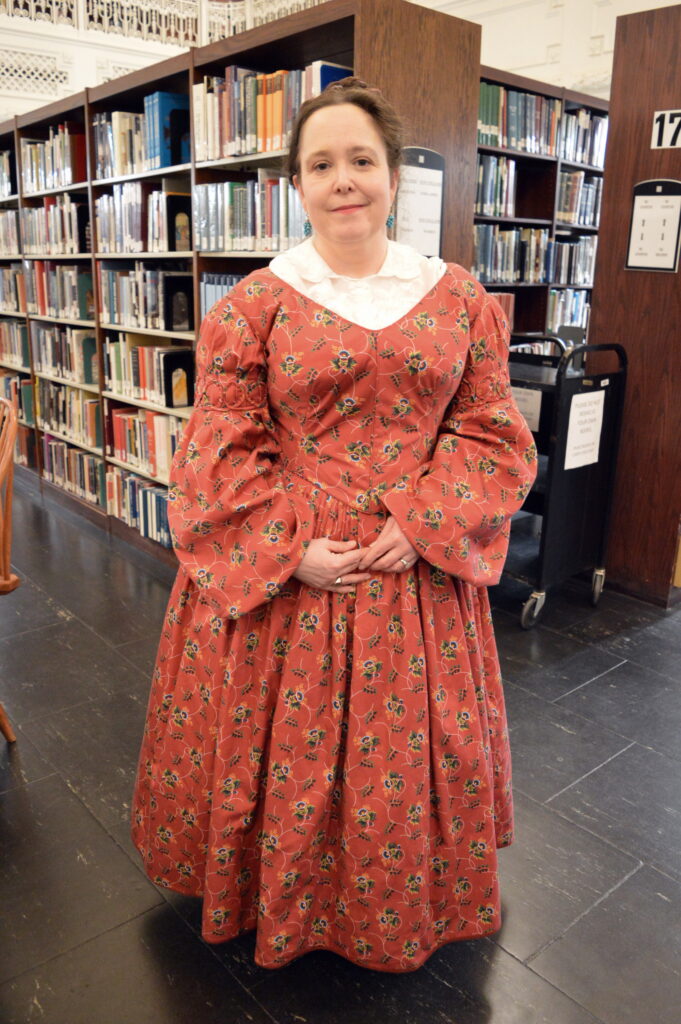
* * * * * *
Lisa Neel’s modest early 1870s dress was clearly recognizable of that part of the Victorian era. As was Naomi Ryan’s somewhat more revealing mid-1860s evening ensemble.
“It’s wool, but it’s a very lightweight wool, so it’s a summer weight wool,” explained Naomi. “And it’s an evening bodice. When we normally think of Victorians, we think of them buttoned up to their necks. But in the evening, the women would bear their shoulders, and so you have the low neckline and the exposed upper chest.
“I have used a lot of different fashion plates for inspiration in creating this gown. The intricate pleating and little rosettes – I made this all myself. And actually, this is one of three bodices that I’ve made for this gown. I have a daytime bodice with a higher neckline, and I have an afternoon visiting bodice that I’ve also made. That one is a little bit lower, but gets filled in with what we would call a dickey nowadays. But it was called a chemisette in the period, and so it’s lacy. It’s just a little filler but it looks like you’re wearing a blouse without actually wearing a blouse. And that’s very typical of the period – to reuse the same skirt. Skirts take the most fabric, so using the same skirt and having different tops to go with it would allow you to have different looks, even though you didn’t own multiple dresses. In that period, people tended to have fewer clothes, but they were much better made than what we tend to get nowadays.”
Naomi said that, while she opted for a Civil War look for the party, her home base of Alexandria lends itself to favor Colonial-era wear.
“I’ve been sewing forever, but period costuming probably about five years now. I have a background in theater and I am local, so I’d say there is more of a call for Colonial costumes around here. That’s what my husband is wearing this evening, but I just finished this dress and wanted to show it off. I guess we’ll have to get him something Victorian for Civil War-era events! My friend Lisa and I went to Gettysburg two years ago and took some photos and did a tour. I’d love to go back there for one of the bigger events, like the Remembrance Day Ball.”
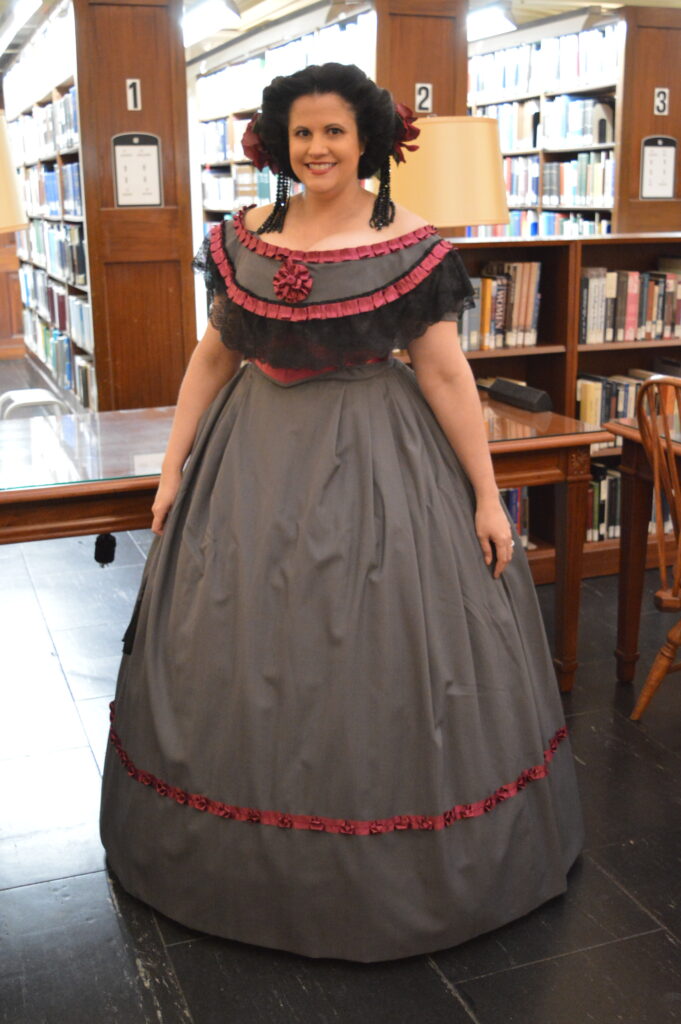
* * * * * *
While many of the costumes were hand-made by the wearers, Mary Ryan’s frolicsome dress was actually a hand-me-down – one which evokes a very special memory of her mother.
“I don’t have a big story. It’s just that, when my mother died, I asked for a number of her favorite outfits that she had saved for all those years. This was in the closet, and I’ve always liked it because it has such a strange print of hats all over it.
“Mom always said that the World War Two years were the best for her, because she was out every night, and she’d usually go to the USO. She said that the soldiers and sailors she met there were all so young. She was in her mid-20s, and they were like, 19 or 20, so she felt that she was doing her bit to cheer them up before they went overseas. This was in San Francisco, and they would ship out from there. I don’t know the exact location of the dance hall – probably in some building downtown – but, yeah, she would talk about it frequently. So, when we were told that you should dress as a woman you admire this evening, I thought, ‘Well, I admire mom. I’ve got this dress in the closet, so why not bring it out and think about her for the night?’”
We couldn’t help but ask if Mary’s mother ended up marrying a returning service man?
“No, my dad was in an essential industry stateside. He was a machinist – building submarines or whatever. So, in the end, I guess they both did their part to help win the war.”
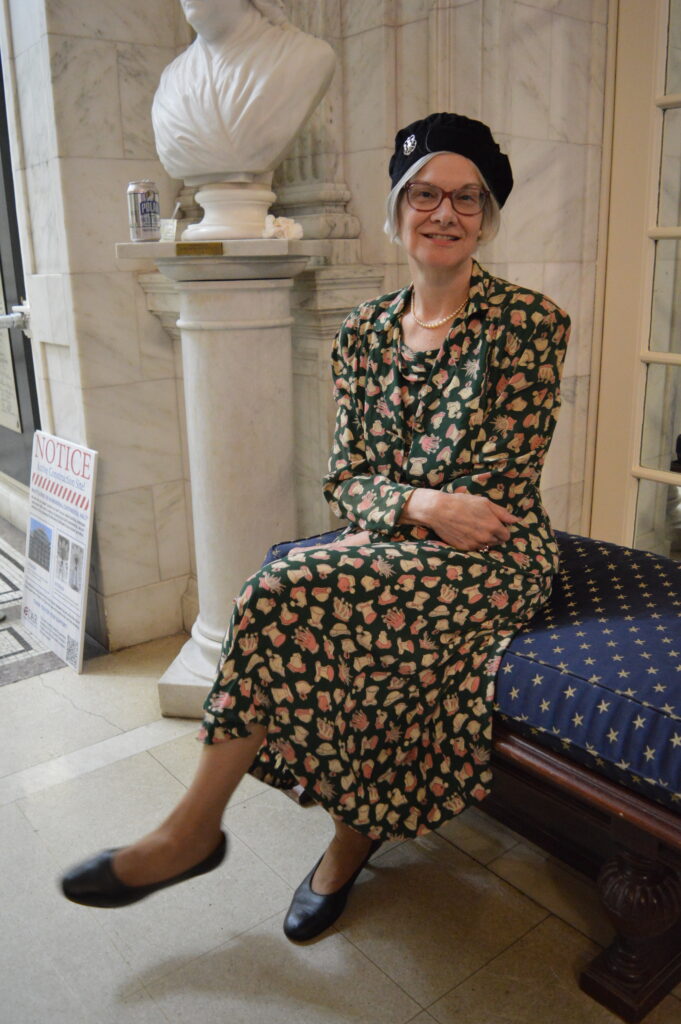
* * * * * *
I’m often asked (as I was at the party) if I could pick a favorite era, what would it be? My friends usually guess that I will say World War Two, which is kind of funny, since last Saturday night I was neatly arrayed in Victorian finery. I suppose that’s why the DAR Museum’s Women’s History Costume Party was such a delightful affair. It gave this reporter a chance to interact with other like-minded individuals who have a tactile investment in history. That’s not to say you have to don a stovepipe hat to fully appreciate Lincoln’s Gettysburg Address, or wear a snood while baking Jennie Wade bread. But it certainly helps to be in the historical moment, when you talk with so many amazing women who are as passionate about their period-correct attire as they are about the people and the eras they represent.
Nothing inspires a love for history quite as much as living it.
(Please enjoy a few more photos from the DAR Museum’s Second Annual Women’s History Costume Party.)
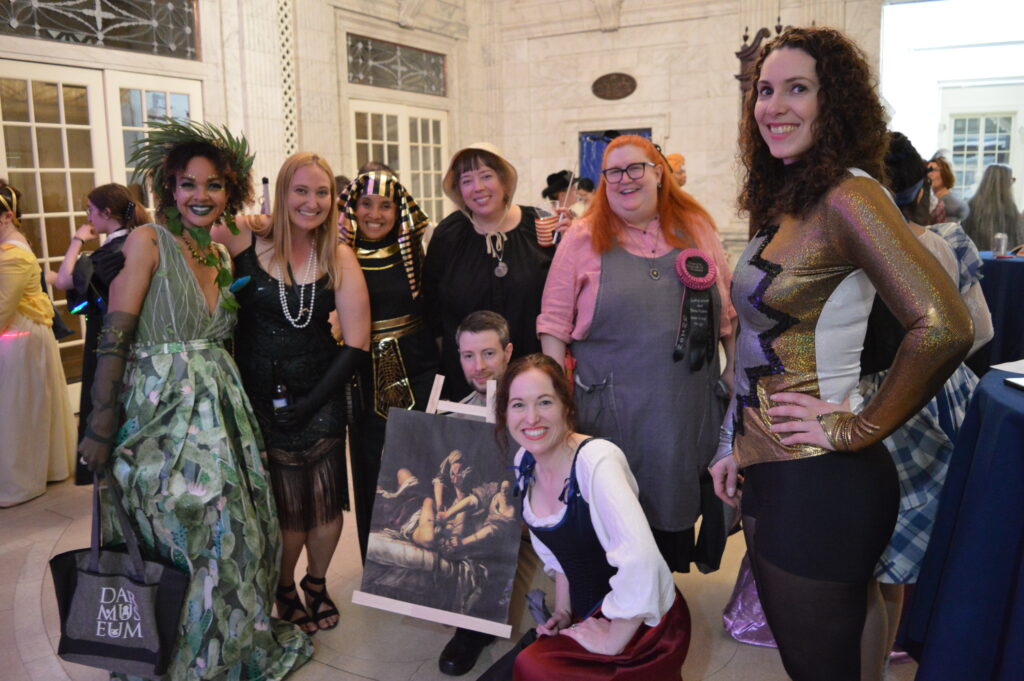
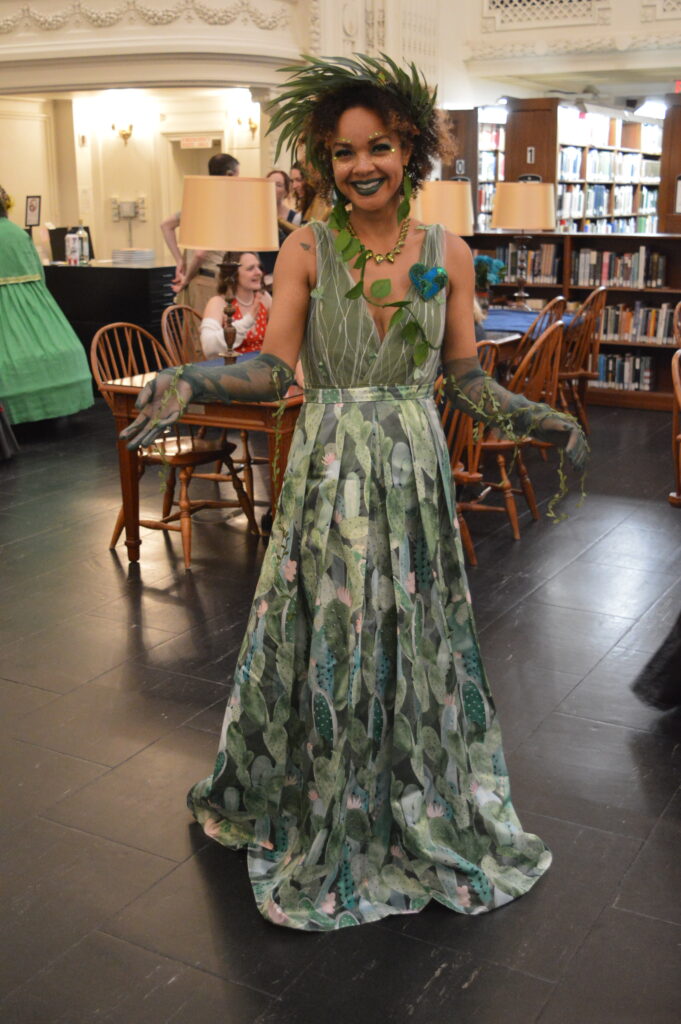
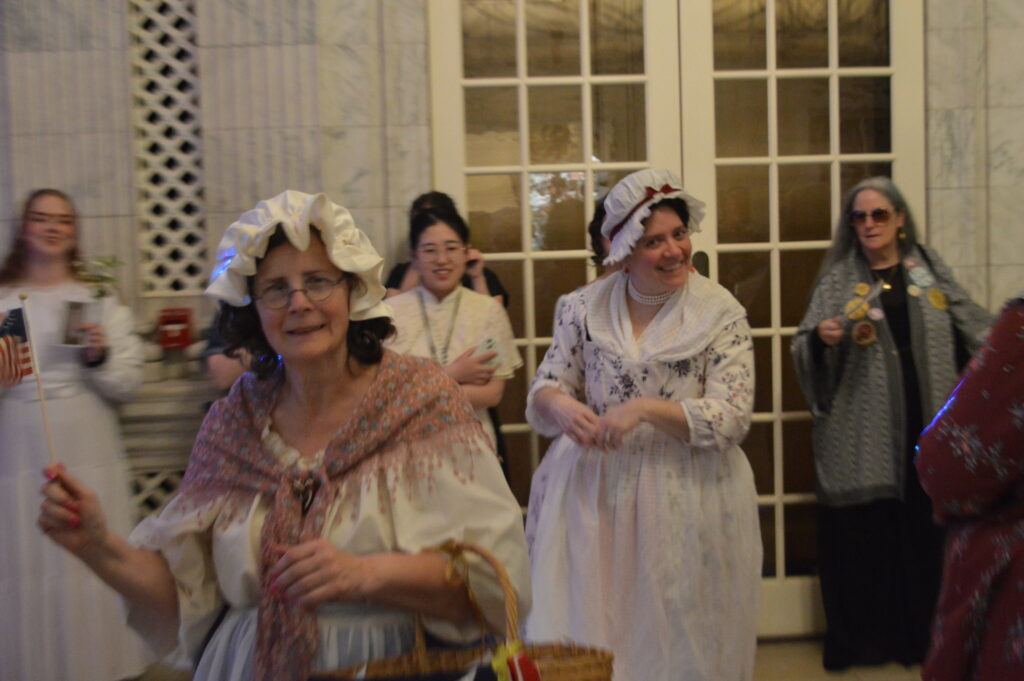
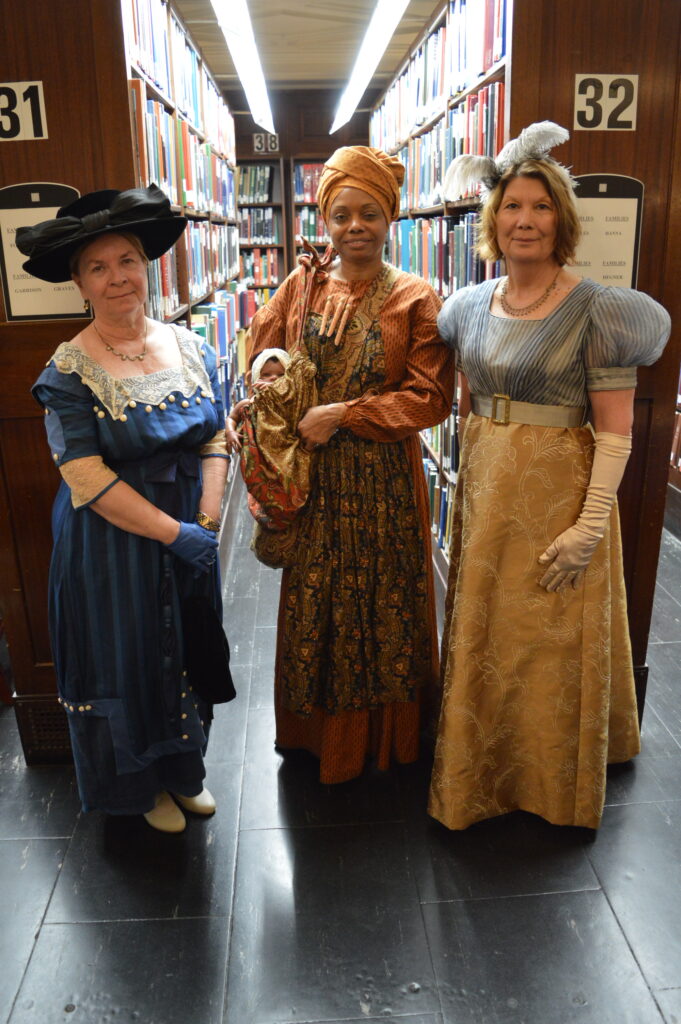
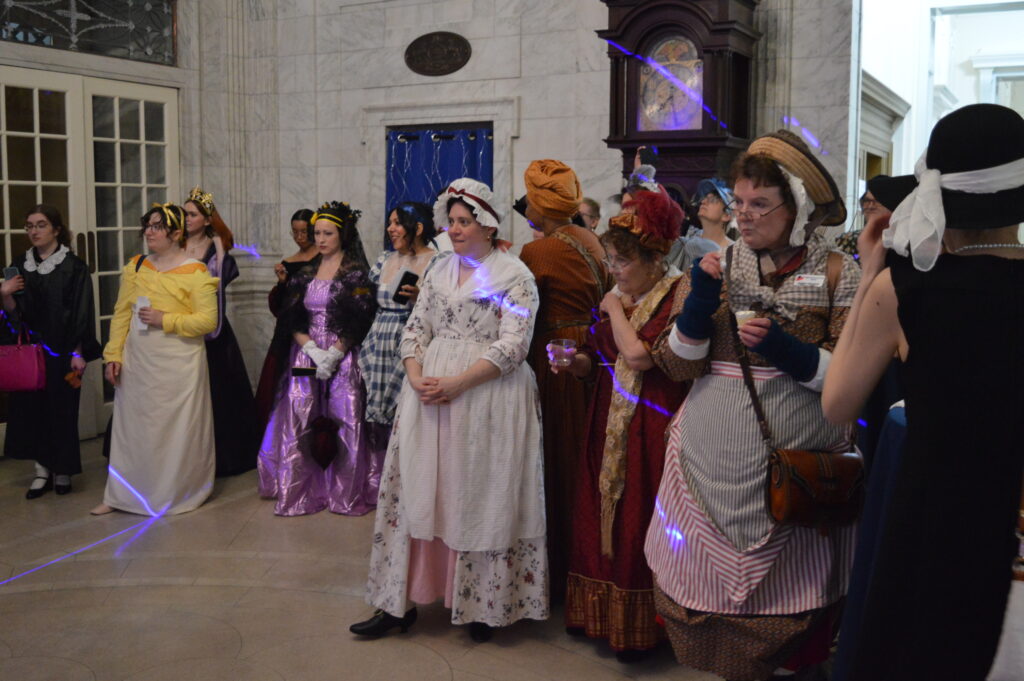
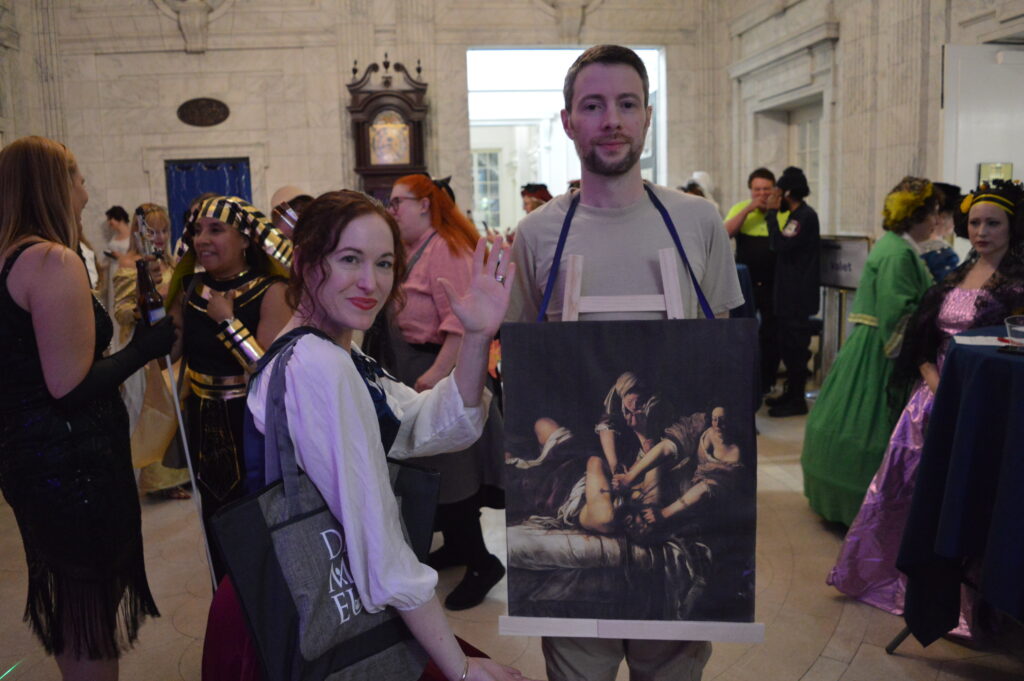
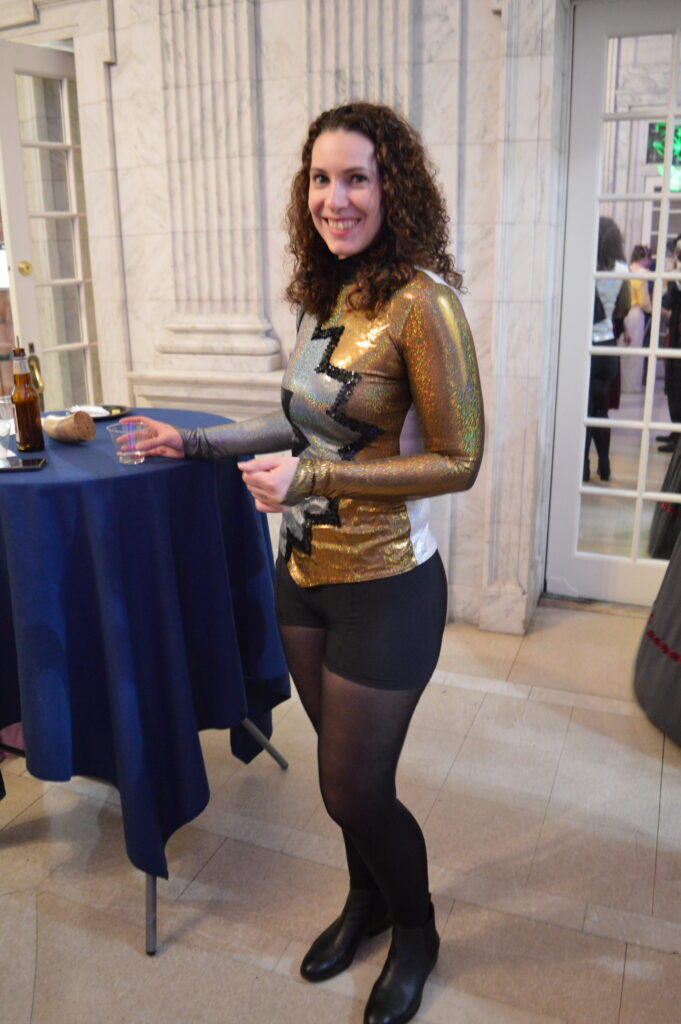
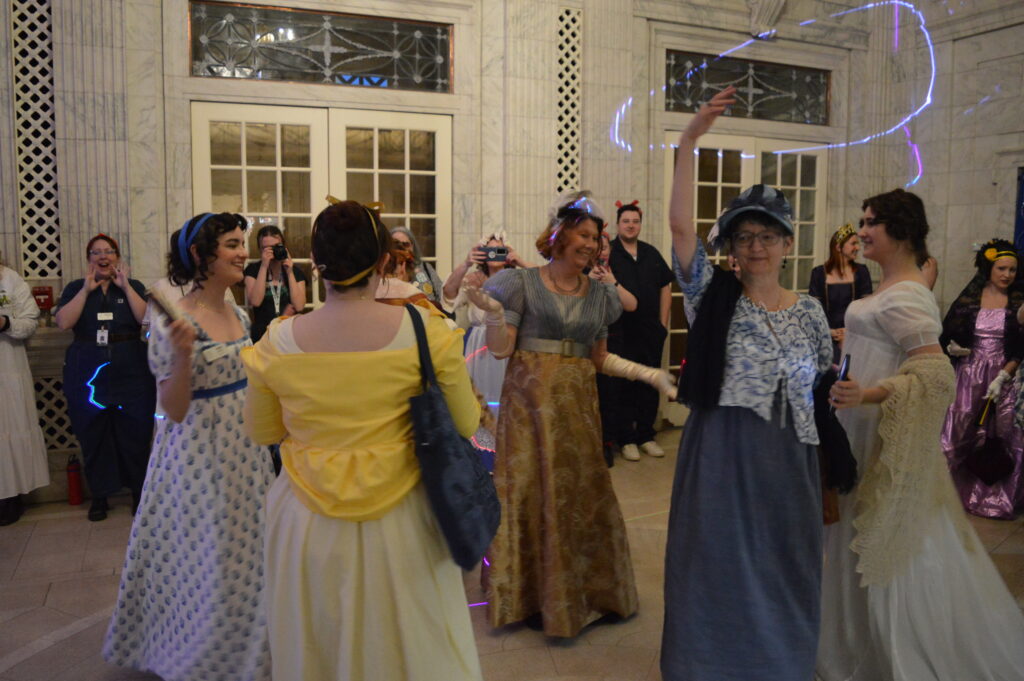
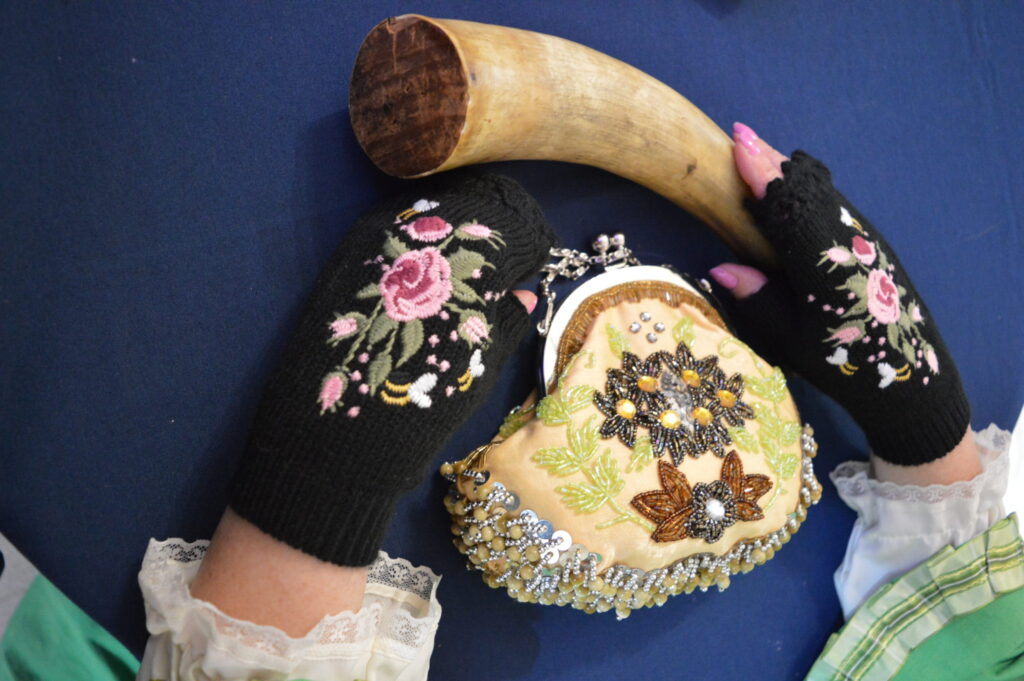
Copyright 2025 Baltimore Post-Examiner. All Rights Reserved

Anthony C. Hayes is an actor, author, raconteur, rapscallion and bon vivant. A one-time newsboy for the Evening Sun and professional presence at the Washington Herald, Tony’s poetry, photography, humor, and prose have also been featured in Smile, Hon, You’re in Baltimore!, Destination Maryland, Magic Octopus Magazine, Los Angeles Post-Examiner, Voice of Baltimore, SmartCEO, Alvarez Fiction, and Tales of Blood and Roses. If you notice that his work has been purloined, please let him know. As the Good Book says, “Thou shalt not steal.”

